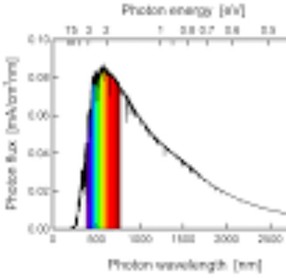Have you ever paused to consider the captivating colors of the sky? From the deep blue of midday to the fiery hues of sunset, the sky’s colors are a daily spectacle. But have you ever wondered, specifically, Why Is The Sky Red sometimes, especially during sunset, while at other times it’s blue? This seemingly simple question delves into fascinating physics involving light and our atmosphere. Let’s explore the science behind these colors and even contrast it with the surprising colors seen on Mars.
Rayleigh Scattering: Earth’s Blue Sky and Fiery Sunsets
The daytime blue sky is a result of a phenomenon called Rayleigh scattering. Sunlight is composed of all colors of the rainbow, but when it enters Earth’s atmosphere, it collides with tiny air molecules – primarily nitrogen and oxygen. Rayleigh scattering is most effective at shorter wavelengths of light, which correspond to blue and violet. This means blue light is scattered much more than red light.
Imagine it like this: when sunlight hits these air molecules, the blue light is bounced around in all directions, spreading across the sky and making it appear blue to our eyes, no matter where we look. On the other hand, red light, with its longer wavelength, is scattered much less and travels more directly through the atmosphere.
However, as the sun begins to set, the light has to travel through a much greater distance of the atmosphere to reach our eyes. This longer path means that most of the blue light is scattered away before it reaches us. By the time the sunlight reaches our eyes at sunset, most of the blue light has been scattered away, leaving the longer wavelengths like yellow, orange, and red to dominate. This is why the sky turns red and orange during sunsets and sunrises.
Mie Scattering: Mars’ Unexpected Blue Sunsets and Red Sky
Now, let’s shift our gaze to Mars. While Earth boasts blue skies and red sunsets, Mars presents a contrasting picture. Images from Martian rovers have revealed that Mars often has a butterscotch-colored sky during the day and, surprisingly, blue sunsets. This difference is primarily attributed to Mie scattering, a different type of light scattering caused by larger particles in the atmosphere.
Mars’ atmosphere is thin and dusty, filled with fine dust particles rich in iron oxide (rust) and even magnetite. These particles are significantly larger than the air molecules responsible for Rayleigh scattering on Earth. Mie scattering is less dependent on wavelength and more about the direction of light. It tends to scatter light forward, in the direction the light is traveling.
On Mars, the fine dust preferentially scatters red light in forward directions. During the Martian day, when you look away from the sun, you are seeing light that has been scattered multiple times. The red light is scattered more forward, making the general sky appear reddish or butterscotch. However, at sunset, when you look towards the setting sun, you are looking directly through the dust. The blue light is scattered forward away from your line of sight, but some blue light is still scattered towards you, especially in the vicinity of the sun itself, leading to the appearance of blue sunsets.
Contrasting Earth and Mars: A Tale of Two Atmospheres
The contrasting sky colors of Earth and Mars beautifully illustrate how different atmospheric compositions and particle sizes can dramatically alter the way light is scattered. Earth’s atmosphere, dominated by small gas molecules, leads to Rayleigh scattering and blue skies and red sunsets. Mars’ dusty atmosphere, with larger particles, results in Mie scattering, leading to reddish skies and blue sunsets.
This difference isn’t just about aesthetics; it reveals crucial information about the atmospheric conditions and particle composition of each planet. Studying these scattering phenomena helps scientists understand planetary atmospheres and climates better.
The Role of Light Spectrum and Color Perception
It’s also important to remember that “color” is a perception based on the spectrum of light that reaches our eyes. Sunlight itself is a spectrum of colors. The following image shows the solar spectrum just outside Earth’s atmosphere:
Our perception of sky color is ultimately determined by how the atmosphere modifies this incoming solar spectrum through scattering. Whether it’s the wavelength-dependent Rayleigh scattering creating Earth’s blue sky or the directional Mie scattering shaping Martian sunsets, the colors we see are a result of complex interactions between light, atmospheric particles, and our own visual perception.
In conclusion, why the sky is red, especially at sunset on Earth, and why Martian sunsets are blue are both explained by the physics of light scattering. By understanding Rayleigh and Mie scattering, we gain a deeper appreciation for the beautiful and diverse colors of the skies above us and on other worlds.
